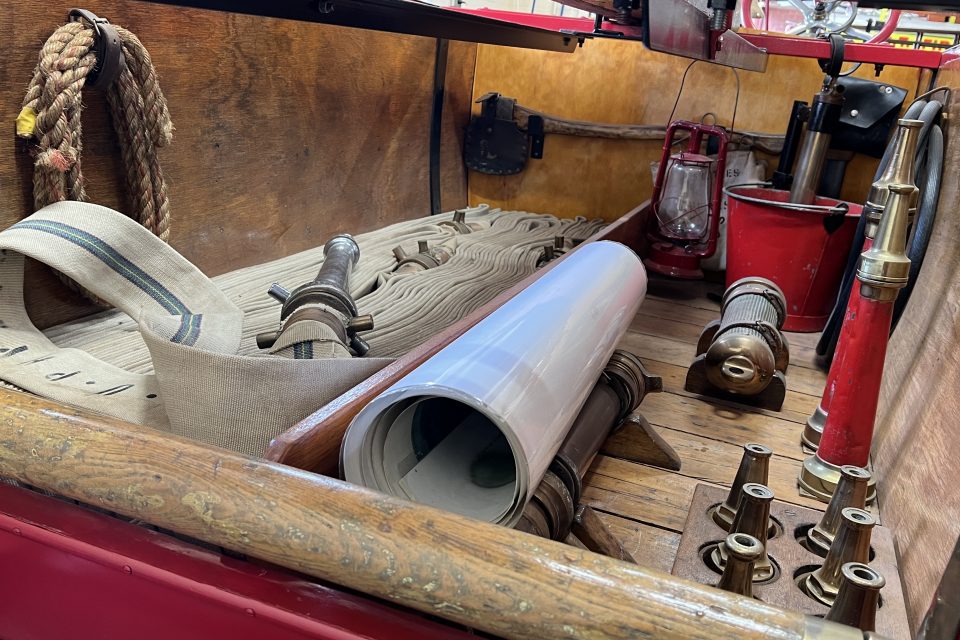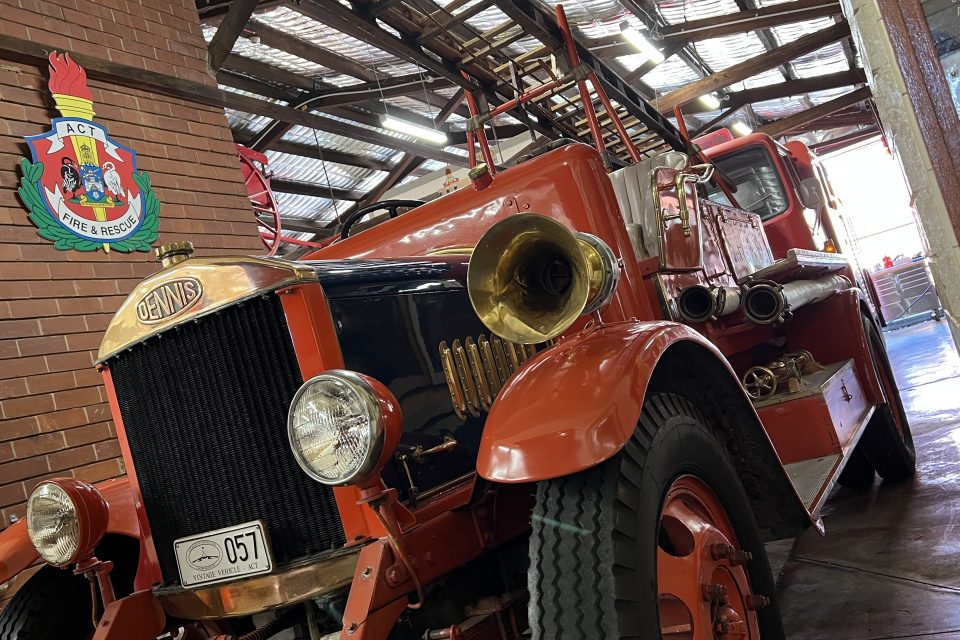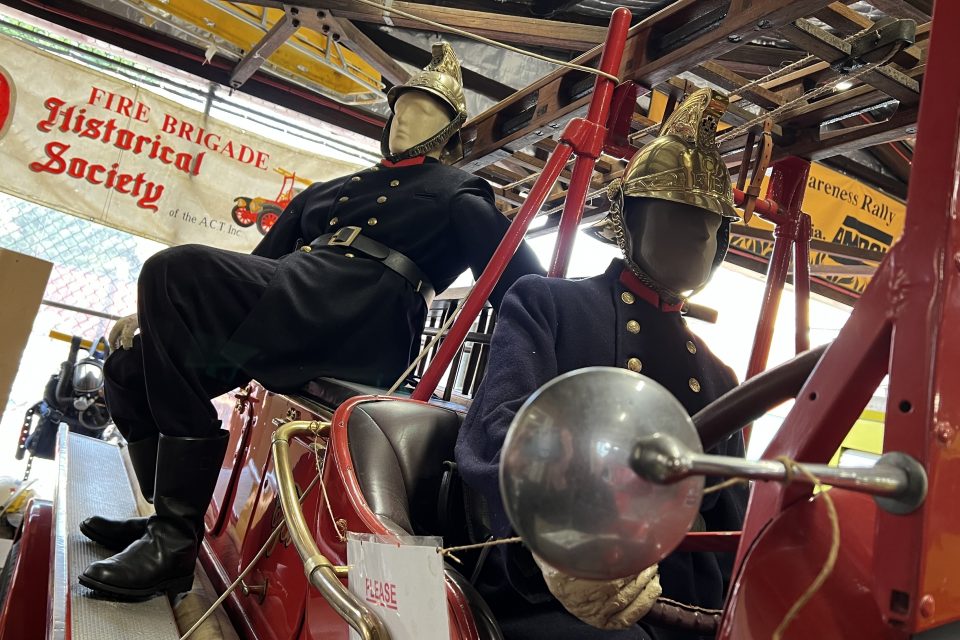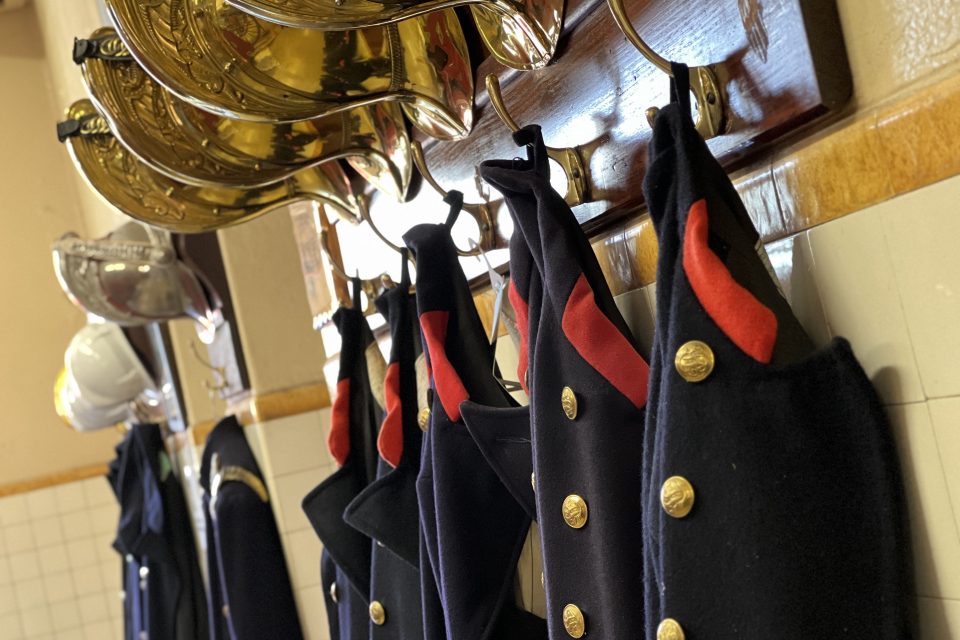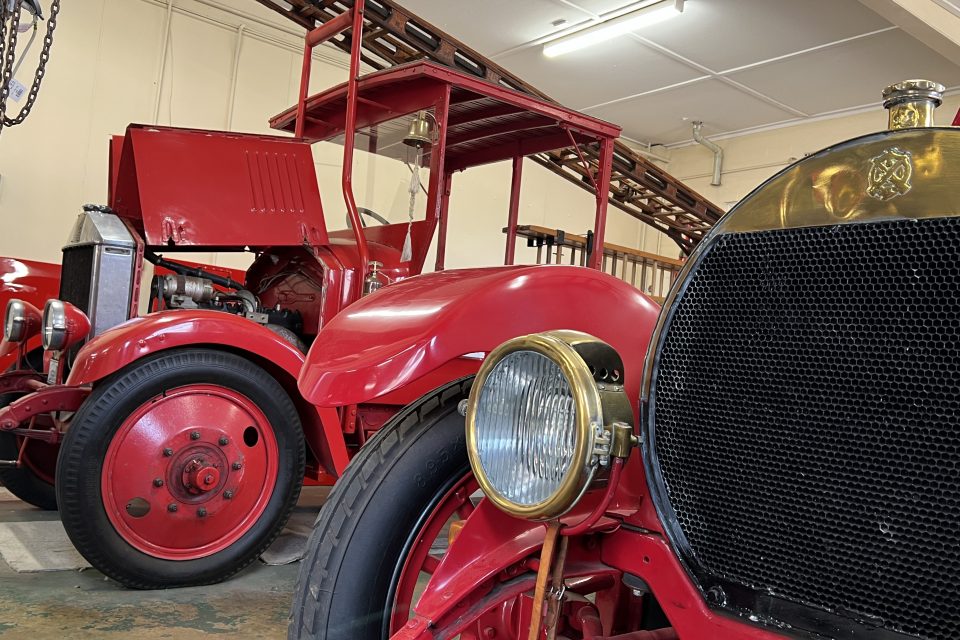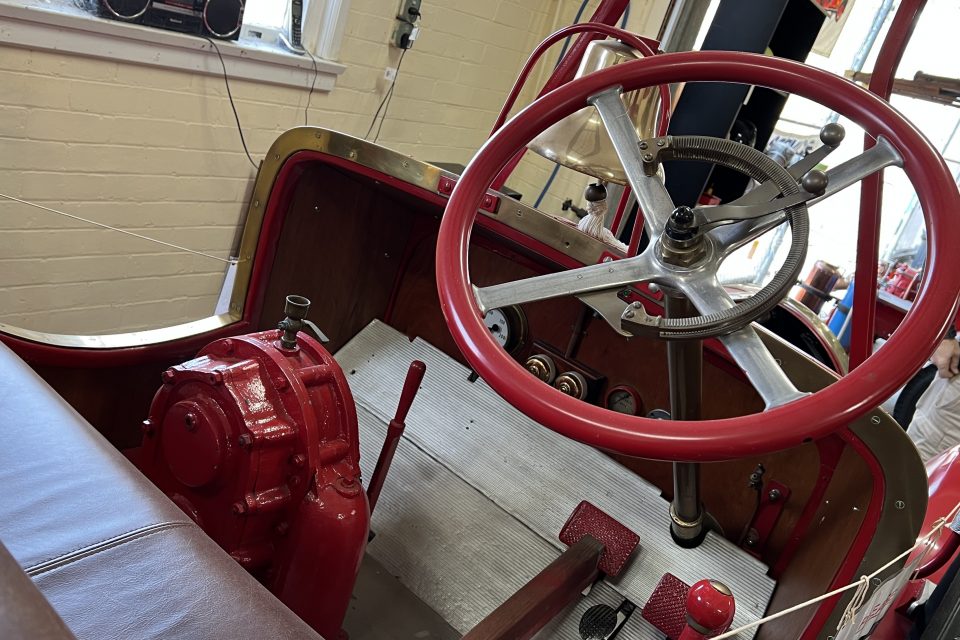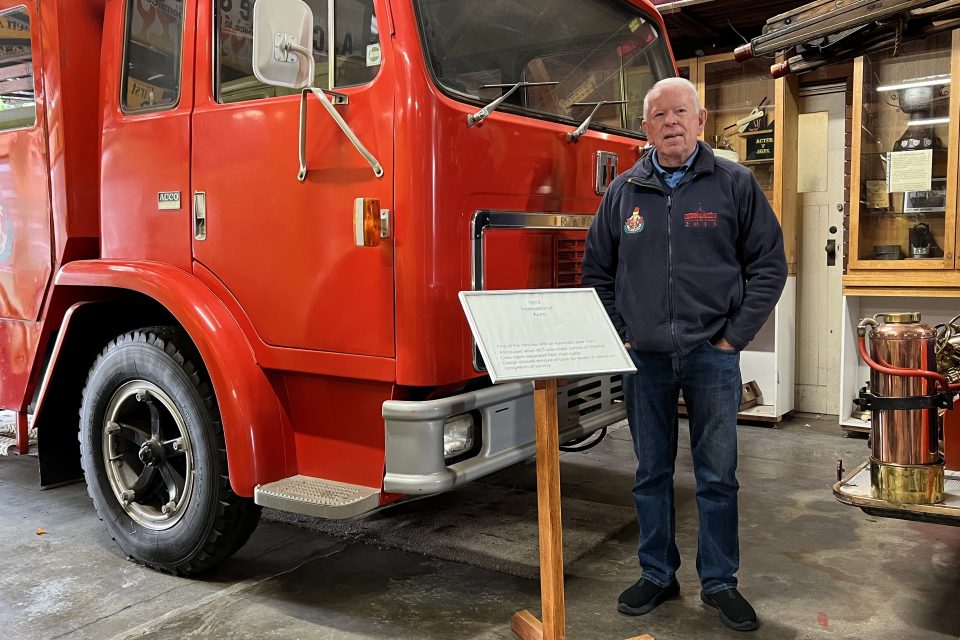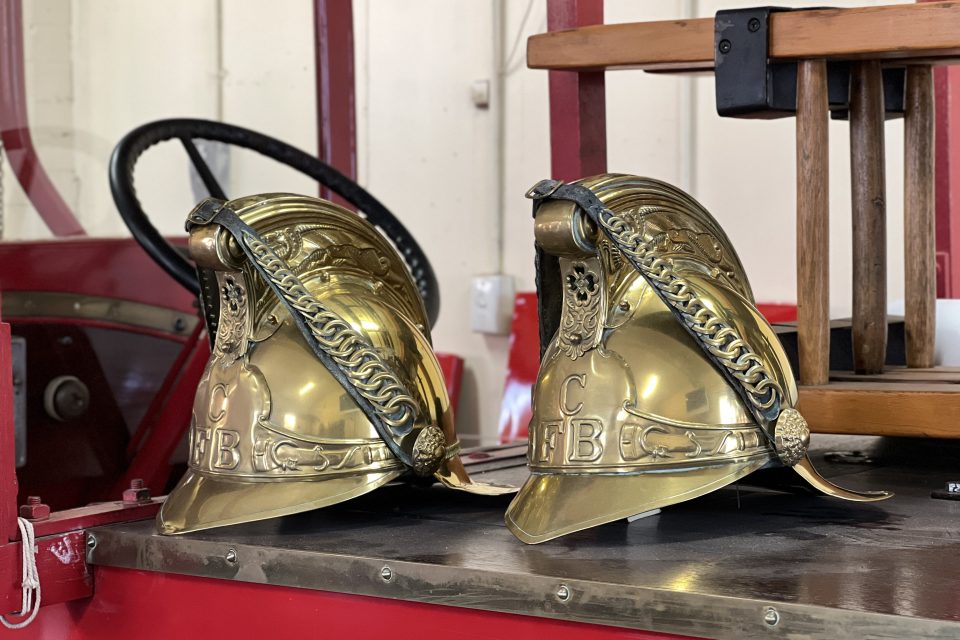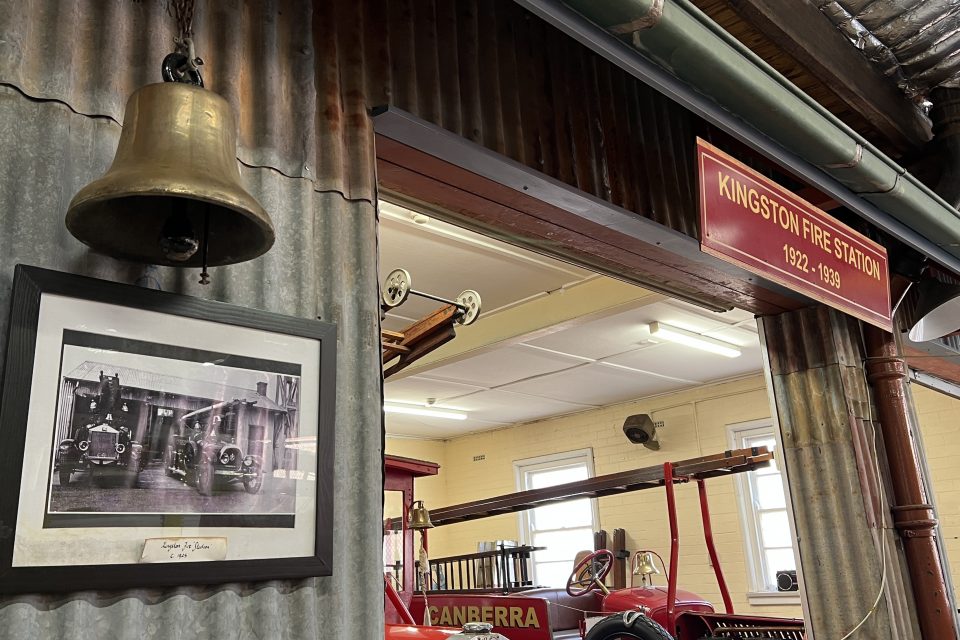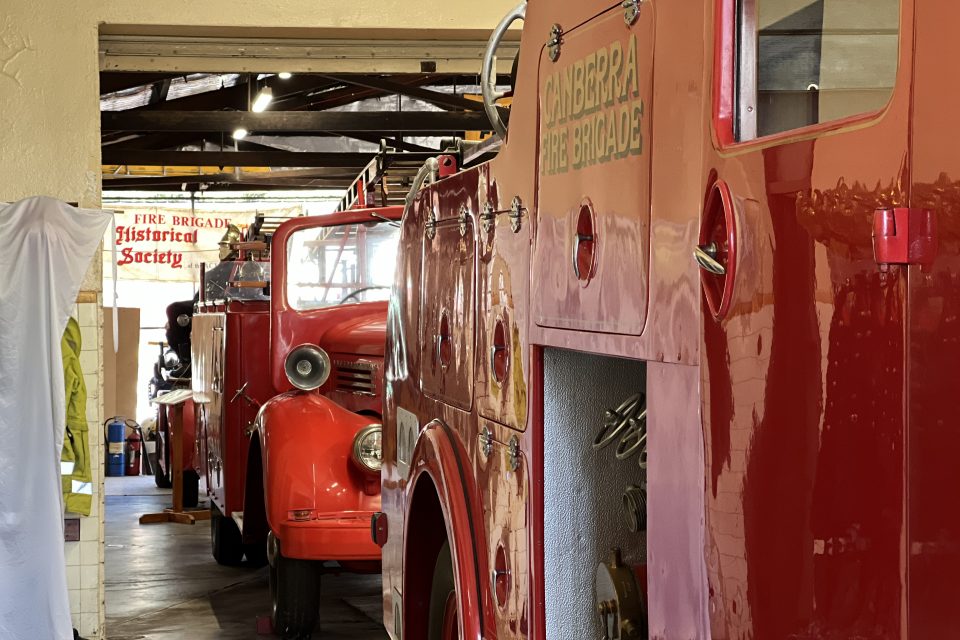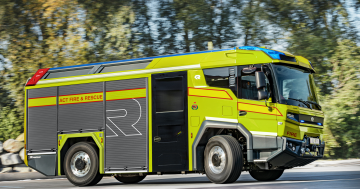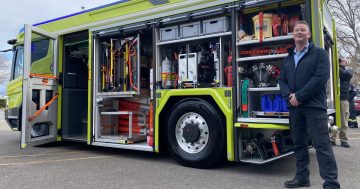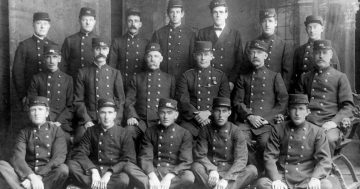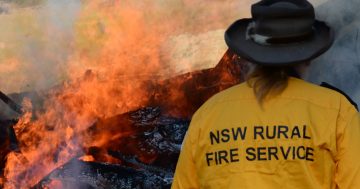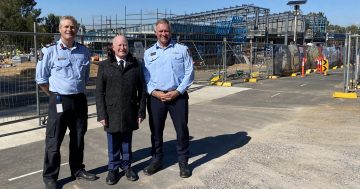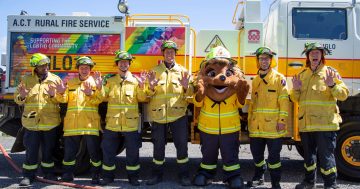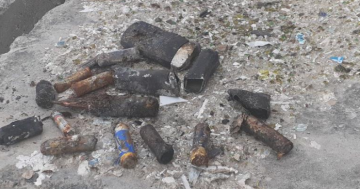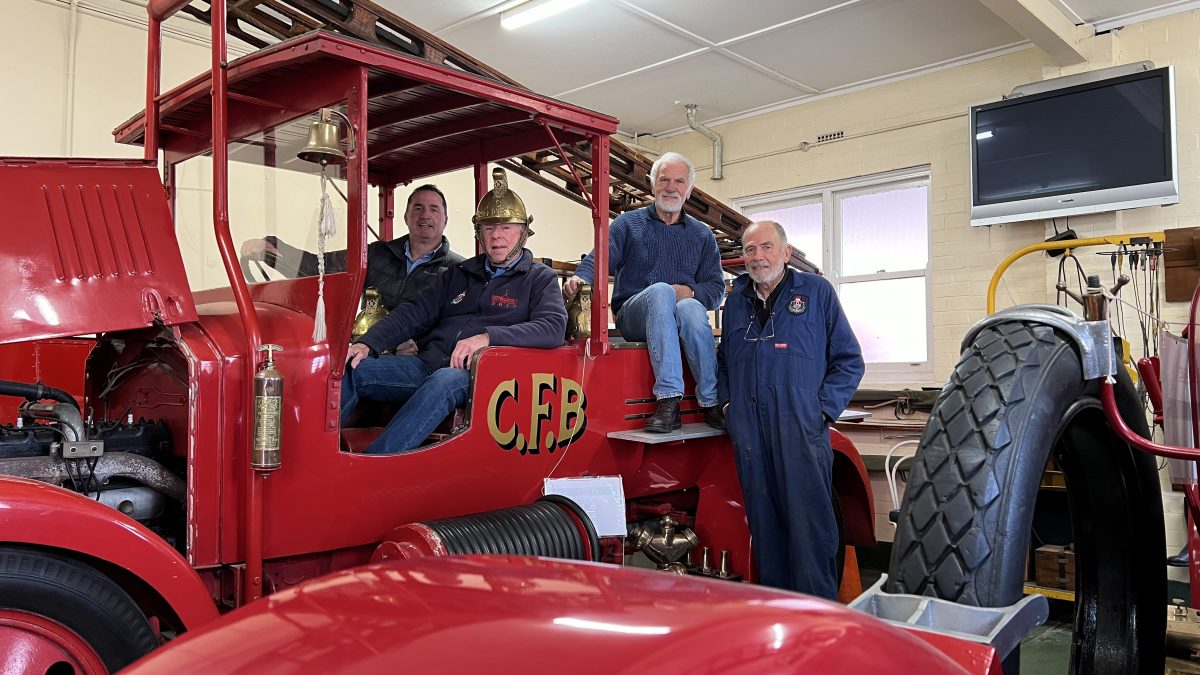
Volunteers at the Canberra Fire Museum in Forrest. Photo: James Coleman.
You probably heard that the ACT’s Fire & Rescue fleet is going electric – starting with the $1.5 million Rosenbauer fire truck, a state-of-the-art behemoth that can ‘encourage’ nearby vehicle operators and pedestrians to get out of the way with “low-frequency tones” designed to shake them to their core.
We’ve certainly come a long way from the skinny-wheeled deathtraps Canberra firefighters and citizens relied on 100 years ago.
It never actually served in Canberra, but the 1913 Hotchkiss vintage fire engine tucked away in the Canberra Fire Museum in the old Forrest fire station, is very similar to the first vehicle to work for the then-new Canberra Fire Brigade.
“It’s straight out of the horse and buggy days,” retired firefighter and ACT Fire Brigade Historical Society volunteer Ron Hourigan says.
“It’s got wheels with wooden spokes, the headlights run on gas, it had to be crank-started and the firies stood on the running boards when it went out. And it was perilous in the wet because it’s got skinny tires that don’t hang on very well. It was absolutely awful to drive.”
It was even worse in winter.
“You always get wet on the job because hoses always leak,” Ron says.
“So imagine you’re on your way back to the station, in wet clothes, sitting on the side of the vehicle, and you can’t get changed until all the dirty hoses are off, cleaned, hung up to dry, and the truck refuelled ready for the next call. Only then can you have a hot shower.”
The only thing in the favour of firefighters of old were the woollen uniforms (and those grand Roman-style helmets).
“In the wet, wool was fantastic. You didn’t feel wet somehow, and even on a hot day, it breathed well.”
The ACT Fire Brigade Historical Society was founded in 1979 to make sure these near-martyrs are not forgotten, by bringing together vehicles, uniforms, breathing apparatuses, and other bits and pieces from 100 years of local firefighting, along with their fascinating stories.
The volunteers took over the heritage-listed building in Forrest as their base in the 1990s after a new wave of larger trucks failed to fit through the main doors, forcing the station to close.
There are 10 vehicles on display today, representing each decade from the 1910s to the 1970s, and new examples from the ’80s and ’90s are on the way. Then there’s another dozen in storage awaiting fastidious restorations to bring them to the same as-new condition as the others.
On a good Saturday, they’ll get 50 to 100 visitors.
“The kids, in particular, love it,” Ron says.
Ron joined the museum in 1983, driven by an interest in Canberra’s history and a career in firefighting.
“I’ve watched Canberra grow and as I grew older and close to retirement, I thought, ‘Gee, it’d be a shame to lose this’. That’s part of it, and another part is the men-shed aspect. We come here a couple of days a week to stay out of ‘her’ way and just tinker.”
A big part of his job has involved pulling together the names of all the women involved with the brigade over the years, especially during World War II, when a women’s auxiliary was formed.
“A lot of these women lived in the area around here – a lot of married women, but some of them were single, public servants and whatnot – and when they finished their day’s work, they were on a roster to staff the fire brigade,” he says.
“That took the pressure off the staffing shortages at the time.”
When Ron joined in the 1970s, NSW ran the Canberra Fire Brigade, which wasn’t so well-liked by the people on the ground.
“NSW would buy a common truck, and fit it out and put a back cab on it we called the ‘dog box’,” Ron reminisces.
“The idea was that when they’d finished with the truck, they could take the whole back off and simply sell the truck off. But it was a bugger of an idea because the crew’s in the back cab, the officers are in the front cab and they’re having to yell through the metal at each other.”
It’s an equally far cry from today when firefighters in the new Rosenbauer will practically be able to whisper to each other.
The Canberra Fire Museum at 4 Empire Circuit, Forrest, is open every Saturday, 10 am to 2 pm.


